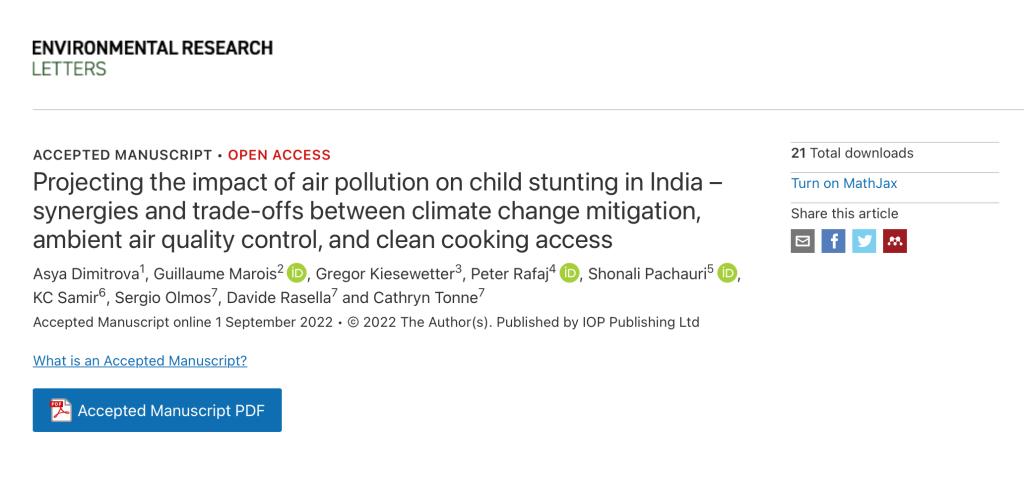Guillaume Marois, Associate Professor, of Asian Demographic Research Institution(ADRI), published paper recently in the Environmental Research Letters. The paper title is Projecting the impact of air pollution on child stunting in India – synergies and trade-offs between climate change mitigation, ambient air quality control, and clean cooking access. Guillaume Marois is the second author of this paper.

Many children in India face the double burden of high exposure to ambient (AAP) and household air pollution (HAP), both of which can affect their linear growth. Although climate change mitigation is expected to decrease AAP, climate policies could increase the cost of clean cooking fuels. Here, we develop a static microsimulation model to project the air pollution-related burden of child stunting in India up to 2050 under four scenarios combining climate change mitigation (2°C target) with national policies for AAP control and subsidised access to clean cooking. We link data from a nationally representative household survey, satellite-based estimates of fine particulate matter (PM2.5), multi-dimensional demographic projection and PM2.5 and clean cooking access projections from an integrated assessment model. We find that the positive effects on child linear growth from reductions in AAP under the 2°C Paris Agreement target could be fully offset by the negative effects of climate change mitigation through reduced clean cooking access. Targeted AAP control or subsidised access to clean cooking could shift this trade-off to result in net benefits of 2.8 (95% uncertainty interval [UI]: 1.4, 4.2) or 6.5 (UI: 6.3, 6.9) million cumulative prevented cases of child stunting between 2020-50 compared to business-as-usual. Implementation of integrated climate, air quality, and energy access interventions has a synergistic impact, reducing cumulative number of stunted children by 12.1 (UI: 10.7, 13.7) million compared to business-as-usual, with the largest health benefits experienced by the most disadvantaged children and geographic regions. Findings underscore the importance of complementing climate change mitigation efforts with targeted air quality and energy access policies to concurrently deliver on carbon mitigation, health and air pollution and energy poverty reduction goals in India.